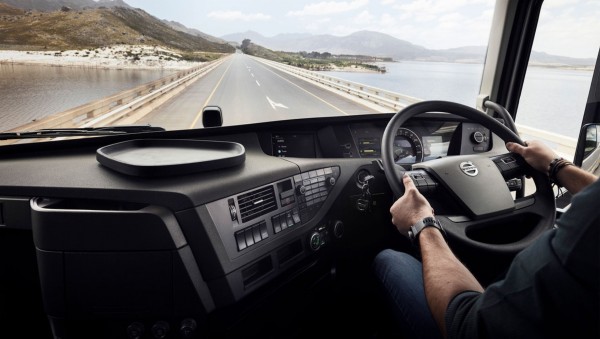Volvo Trucks is introducing new functions that help drivers save fuel even when cruise control is not activated. The launch of upgraded D13 diesel engines for Euro 3, Euro 4, Euro 5 and EEV markets, together with the new software, enables fuel savings of up to 3%.
The new function is called Volvo Torque Assist and is intended to reduce fuel consumption by providing more efficient driving when the cruise control is disabled in long haul operations.
“We have seen that there is a need to help drivers save fuel also when the cruise control cannot be used. I-Cruise, our intelligent cruise control, is still the best way to optimize fuel consumption, but sometimes it might not be applicable. In this way we can support the driver to cut fuel costs in such driving situations,” says Peter Hardin, Director Product Management at Volvo Trucks.
Volvo Torque Assist is designed to give more fuel-efficient driving by automatically adapting the truck’s torque and acceleration to the road topography, the load and speed changes. The function is only active when driving without using cruise control.
Another supporting function keeps the amount of injected fuel constant after the engine’s ‘green range’ has been passed. The slightly compromised performance is compensated by improved fuel economy.
The pedal map has also been recalibrated. A less sensitive pedal creates a smoother torque development, which, in turn, makes the truck easier to control.
“Drivers that are less skilled in economical driving benefit more than those who already have that driving style,” explains Peter Hardin. “The new software also gives a more significant result with heavy loads, many slope changes or large speed variations, while drivers transporting lighter loads with constant speed on flat roads will save less fuel. In field tests we have actually seen examples of a larger potential for savings, than the 3%.”
The hardware upgrades in the Euro 6 Step D versions of the D13 engine, released earlier in 2019, are also being used to raise the standards of the Euro 3 to 5 engines. Internal friction has been reduced with new cylinder liners and new V-shaped oil scraper rings. The turbo efficiency has been improved and the engine management system is upgraded to a newer version with better capacity.
In all, these hardware upgrades save around 1% fuel, while the fuel saving potential for the new software depends on driver experience and the operating conditions.




